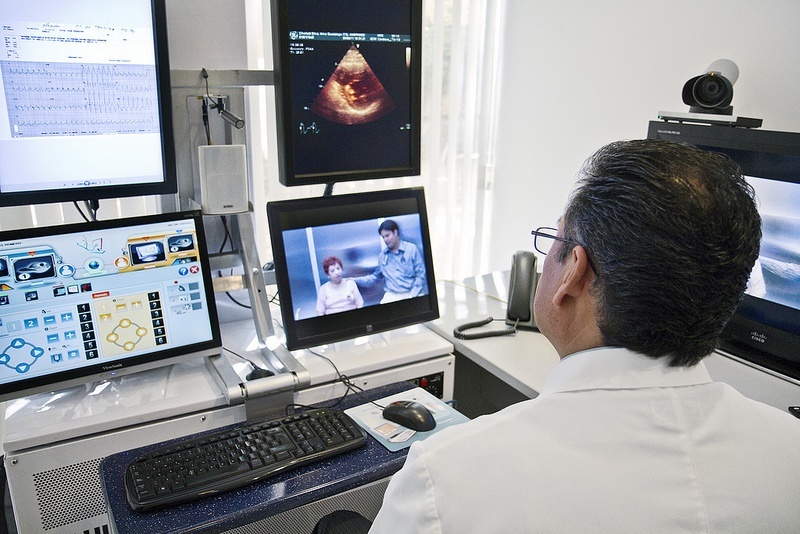The Telehealth Revolution: What Stuck After the Pandemic Ended
When COVID-19 forced the world indoors in 2020, telehealth went from a niche service to an overnight necessity. Doctors who had never considered virtual appointments suddenly found themselves staring into webcams, and patients in waiting rooms became patients on couches. The question everyone asked was simple: would any of this last?
The answer turned out to be more nuanced than anyone expected. While telehealth use has dropped from its pandemic peak, it’s settled at levels far higher than before 2020. The revolution didn’t disappear when the lockdowns ended. It just found its proper place in modern healthcare. 
The Numbers Tell the Story
Before the pandemic, telehealth visits accounted for less than one percent of all medical appointments. During the height of COVID, that number skyrocketed to nearly 70 percent in some specialties. Today, telehealth has stabilized at around 15 to 20 percent of total visits, depending on the medical field and region. That’s not a return to normal. That’s a fundamental shift in how Americans access healthcare.
Mental health services have become the poster child for successful telehealth integration. Therapy and psychiatry appointments remain heavily virtual, with many providers offering exclusively online services. The reasons are obvious once you think about them. Mental health treatment doesn’t require physical examinations, the privacy of home can actually help patients open up, and the reduced barrier to access has brought treatment to people who might never have walked into a therapist’s office.
What Works and What Doesn’t
Not every medical service translated well to screens. Telehealth thrived in areas where conversation and observation matter more than hands-on examination. Primary care check-ins, medication management, chronic disease monitoring, and follow-up appointments have become reliably virtual options. Dermatology found an unexpected home online, where high-quality photos often tell doctors everything they need to know.
On the other hand, services requiring physical touch, complex procedures, or immediate interventions naturally stayed in-person. Nobody wants a virtual emergency room visit, and your annual physical still requires someone to actually check your blood pressure and listen to your heart.
The hybrid model emerged as the winner. Most successful practices now offer both options, letting patients choose based on their specific needs. Need a quick consultation about a rash? Telehealth works perfectly. Due for labs and a full physical? Time to come into the office.
The Technology Finally Caught Up
One reason telehealth stuck around is that the technology improved dramatically. Early pandemic video calls were plagued by frozen screens, audio delays, and platforms that felt like they were held together with digital duct tape. Healthcare providers scrambled to find HIPAA-compliant solutions that actually worked.
Today’s telehealth platforms are smoother, more secure, and genuinely user-friendly. Integration with electronic health records means doctors can access your full medical history during a video call just as easily as during an in-person visit. Remote monitoring devices let patients with chronic conditions send real-time health data to their providers. The infrastructure that seemed impossible in March 2020 is now standard practice.
The Regulatory Landscape Shifted
The pandemic forced rapid regulatory changes that temporarily removed barriers to telehealth adoption. Medicare expanded coverage, state licensing requirements were relaxed, and privacy regulations were temporarily eased. When the public health emergency ended, many worried these flexibilities would disappear overnight.
Instead, lawmakers recognized what patients and providers already knew: telehealth had proven its value. Many temporary measures became permanent or were extended indefinitely. Congress has continued to expand Medicare telehealth coverage, and numerous states have passed laws cementing telehealth reimbursement at parity with in-person visits.
Of course, rapid expansion brought new challenges. The boom in telehealth services created opportunities for bad actors, leading to increased scrutiny from regulators. Issues with improper billing, unnecessary prescriptions, and questionable practices have kept more than one healthcare fraud lawyer busy as the industry works to establish proper guardrails. The goal is protecting the innovation while preventing abuse, a balance that’s still being calibrated.

Access Expanded but Gaps Remain
Telehealth has genuinely improved access for many Americans. Rural patients who once drove hours to see specialists can now connect virtually. People with mobility issues, transportation challenges, or demanding work schedules found medical care becoming more accessible. Parents no longer need to arrange childcare for routine appointments.
However, the digital divide remains real. Reliable internet access isn’t universal, and not everyone has smartphones or computers capable of handling video appointments. Older patients and those less comfortable with technology sometimes struggle with virtual visits. Language barriers can feel more pronounced through a screen. The telehealth revolution has been transformative for some and irrelevant for others, highlighting existing inequalities in healthcare access.
Looking Forward
Telehealth isn’t going anywhere. It’s woven into the fabric of modern healthcare delivery, offering convenience and access that patients now expect. The pandemic didn’t just temporarily change how we see doctors. It permanently expanded our options for receiving care.
The future likely holds even more integration of virtual and in-person care, better technology, and smarter ways to determine which appointments work best online versus face-to-face. What stuck after the pandemic ended wasn’t just telehealth itself, but the understanding that healthcare delivery can be flexible, accessible, and patient-centered in ways we never imagined before 2020 forced us to reimagine everything.









